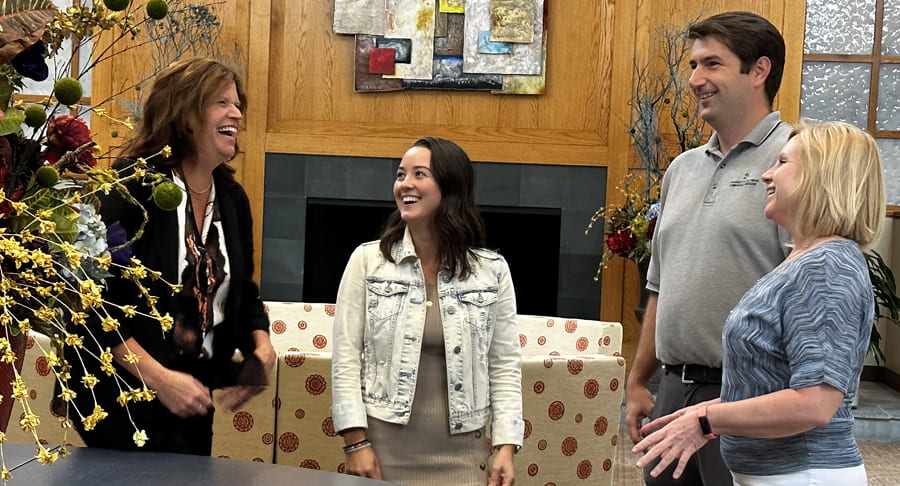
Who Says You Can’t Go Home? An Invitation to Our Alumni
Who Says You Can’t Go Home? An Invitation to Our Alumni
Why your alma mater just might be the perfect venue for your next conference or professional event.
Dearest Alumnus or Alumna,
Think back to the last time you visited campus. Maybe it was for a spirited homecoming celebration or a big alumni weekend get-together. Maybe it was to celebrate the graduation of a loved one who followed in your footsteps and earned their degree from UD. Perhaps it was even for your own graduation ceremony. In any case, it’s been too long!
Our alumni hold a special place in our community and form a global network over 200,000 strong. As higher education faces political scrutiny and many of our Blue Hens undoubtedly feel the tension of an unpredictable economy, requests for donations or nudges for nebulous “alumni engagement” can fall flat.
So, we’re writing to extend an unconventional invitation: let us host your next conference or professional event here on campus.
If you’re feeling more detached from your alma mater lately, you’re certainly not the only one. “49% of institutions report their alumni engagement has declined or flatlined since COVID, with another 7% stating engagement has decreased significantly,” Alumni Access reported in their 2024 Voluntary Alumni Engagement in Support of Education study. They also found that this trend was more pronounced in public institutions.
The decline is even more severe among recent graduates. “Young alumni giving rates have dropped by 18% over the past decade, with many citing a lack of meaningful engagement or perceived value beyond solicitation requests,” according to a 2024 Council for Advancement and Support of Education (CASE) report.
Our campus remains a valuable resource for you, even years after walking the graduation stage.
We want to remind you that UD’s campus–your former home–is still here for you, far beyond an invite to alumni weekend or a solicitation for donations. During your time as a student, you and the university were partners in your education. In your working professional era, Conference Services is here to renew that partnership by making campus your or your business’s go-to event venue.
Familiar locations and comfortable settings, especially those that recall memories of learning and growth, are an ideal place for business gatherings. Why try to drag inspiration from the eggshell white walls of a sterile conference center when you can step back into a space where your younger mind flourished with new ideas and creativity?
Channel the productivity and powerful thinking of your college days.
In an interview with U.S. News & World Report, Cara Giacomini, CASE’s vice president of data, research, and technology, divided alumni engagement into four categories: philanthropy, volunteering, experiential, and communications. Asking alumni to give money blindly can come as an unwelcome request in a turbulent time. Conversely, holding experiences on campus is a collaborative and reciprocal investment.
Working with Conference Services is a mutually beneficial way to give back to your alma mater.
Not only do you get the expertise of our incredible Conference Services team, but you also position your company as a partner of the school. Fellow Blue Hen alums may take note, opening the door for future business and social connections. Current students will see your group on campus and might remember you when starting their job search. Over the duration of your event, you can also build bridges with professors, students, and other members of the UD community.
Without a doubt, our Blue Hens are our greatest asset.
“We are seeing alumni [be] key to corporate partnerships that evolve, and investments in research and development,” Giacomini said. “This all points to alumni engagement really being about building a much larger community and keeping that community active well past graduation.”
All that to say–we miss you and we hope to see you again!
Sincerely yours,
UD Conference & Event Services Team
Want to learn more? Contact a member of our Conference Services team.









